
Photos and text by Yvette Cardozo
Vol. 21, No. 11 July/August, 2018
Wow, it was like seeing the Grand Canyon from a train. I never quite expected to be able to look out my window as we traveled into Mexico’s Copper Canyon … and see straight down into a 2,000 foot deep chasm.
The rocks folded like ribbon, carved by wind and rain over eons. The bands of brown, orange and pink swirled in abstract terra cotta patterns as far as I could see.
But landscape was only part of it.

The culture, the people, the odd little quirks are what make this whole adventure unique. The 405 mile route goes from Los Mochis near the Pacific coast to the inland city of Chihuahua, but the best of it is from El Fuerte to Divisadero.
Before our trip, we spent a night in El Fuerte. Outside town we visited the tiny village of Capomos where a local lady, Camilla, patiently tried to teach us how to make tortillas. She expertly patted corn dough into flat pancakes and tossed them into a greased wok shaped pan. As for us, we mangled the corn dough into a misshapen wad that promptly caught fire.
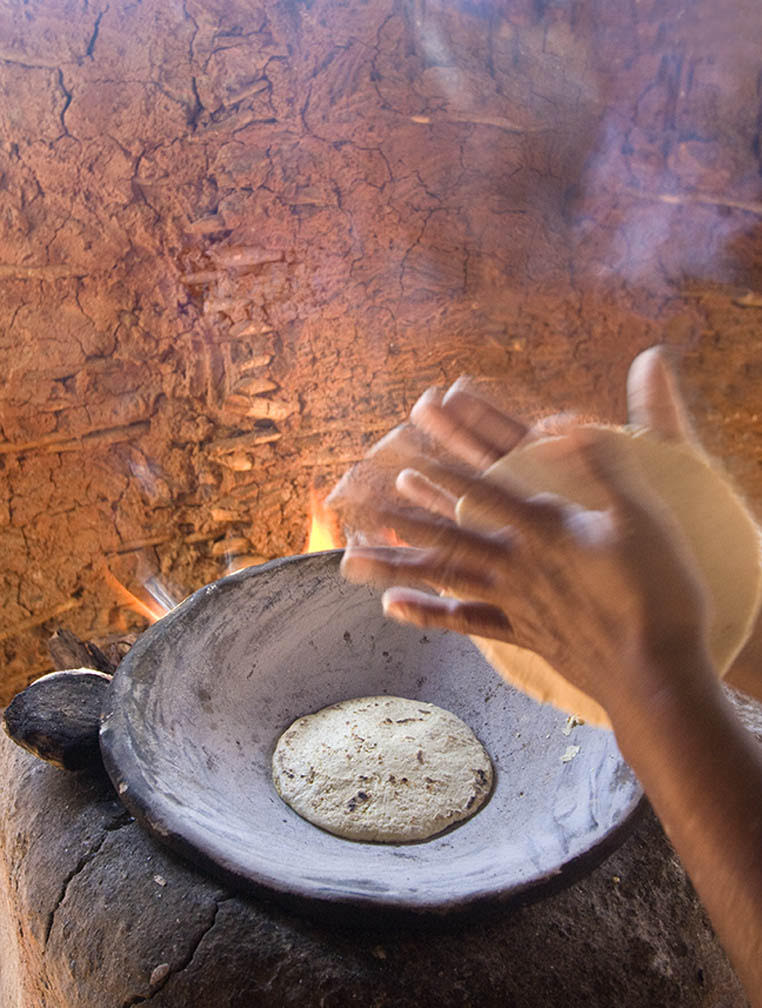
With that behind us (Camilla’s tortillas were yummy), we went to see local dances.
Years ago, Mayo warriors fought to the death with knives while tied to each other. Today, the fight is a graceful ceremonial dance accompanied by drums made of gourds sitting in tubs of water and rattles of dried butterfly cocoons. Jose was a deer, then a mule. He kicked. He brayed. He let loose with uncannily accurate digestive sounds. It was a blast.
Jose and Camilla, like the others, are Mayo Indians … not Mayans. They’re named for the local Mayo River. Today they live in small towns, hunt those deer and grow squash, beans, melons, wheat and, of course, corn.
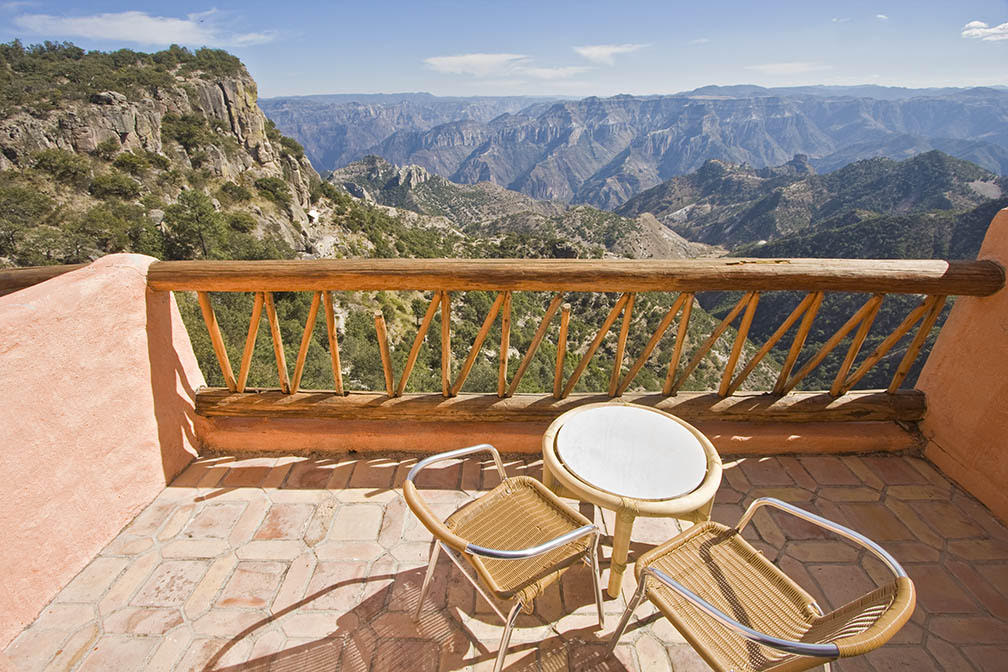
Back at our hotel, Hotel Posada del Hidalgo, a one-time prison converted to a home and now a picturesque inn, we learned that our room was four down from the very spot where Don Diego de la Vega … El Zorro … was born. Zorro, it turns out, really did exist. He really did rob the rich to give to the poor, though it all happened in what today is California when El Zorro was closer to 50 than a swashbuckling 20. And yes, he did wear a mask and wield a slashing sword.
But as for the infamous “Z” supposedly carved across the landscape … the owner of our hotel shrugged with a sly smile. “¿Quien Sabe?” … who knows.
And the next day, we boarded the train.
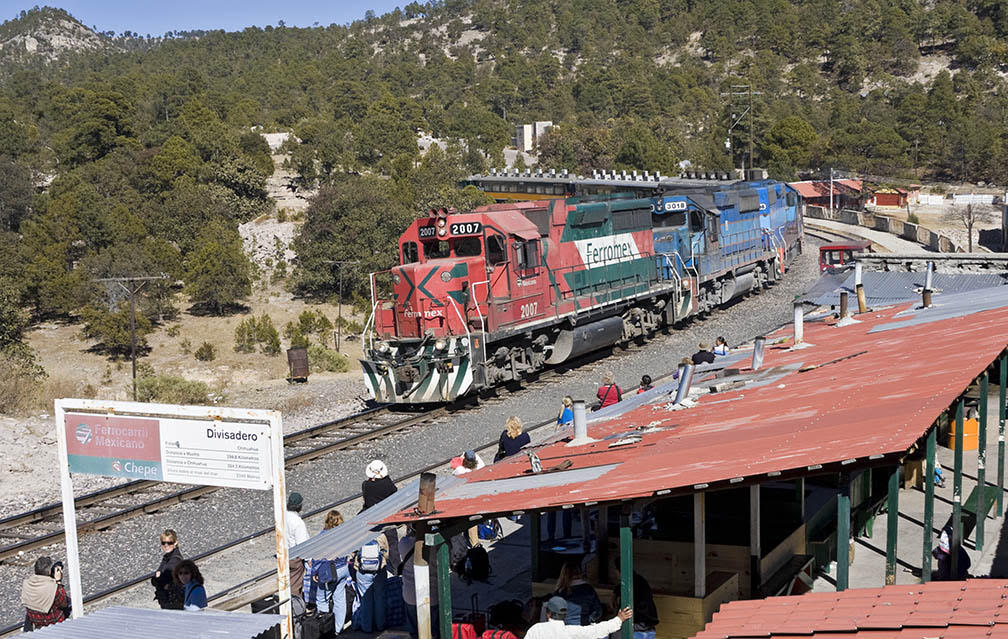
Copper Canyon is actually only one of a dozen massive canyons in Mexico’s Sierra Madre. It’s called Copper Canyon (Barranca del Cobre) not because copper is mined but because the rock walls are supposedly copper colored. From afar, they can look more gray than orange but the whole thing is still beautiful.
From El Fuerte, the landscape progresses from corn and bean fields to rolling hills dotted with cactus and cotton plants the size of trees. We cross a long bridge, go through an even longer tunnel. And then it gets interesting.
The tracks double back on themselves, climbing cliffs in serpentine curves. The hills become walls of folded sandstone that get more and more wild. Steep canyons drop to rock filled riverbeds. As you go, the angle gets steeper. The curves get sharper.
There are, for those who count such things, 37 bridges and 86 tunnels on the route. It took 90 years and five different companies (plus the Mexican government) to build the line, which was only completed in 1961 and climbs 6,700 feet in hardly 130 miles.
If you’re a train buff, those figures are extremely impressive (note: remember the near century it took to build the thing). The reason for all this effort? Create a way to get inland produce to the coast for shipping. Meanwhile, the train has been hailed as the word’s most scenic railroad and is one of Mexico’s main tourist draws.
In the tourist train, the seats are first class, the facilities are modern and there’s a dining car, which we eventually found. We spent the rest of that day downing tacos and Pacifico beer while the canyon flashed by.
Finally, seven hours and only 134 miles down (or is it up) the line, we arrived at Barrancas, where we got to stay at Posada Barrancas. This hotel literally overlooks the canyon. Picture having a hotel room on the rim of the Grand Canyon … having your balcony hang over a 2,000 foot drop.
There was native family living in caves a short hike down from the hotel. We could see them from our balcony and as we watched, a small girl ran down the trail like a gazelle, hopping from rock to rock and disappearing behind boulders before we could even catch our breath.
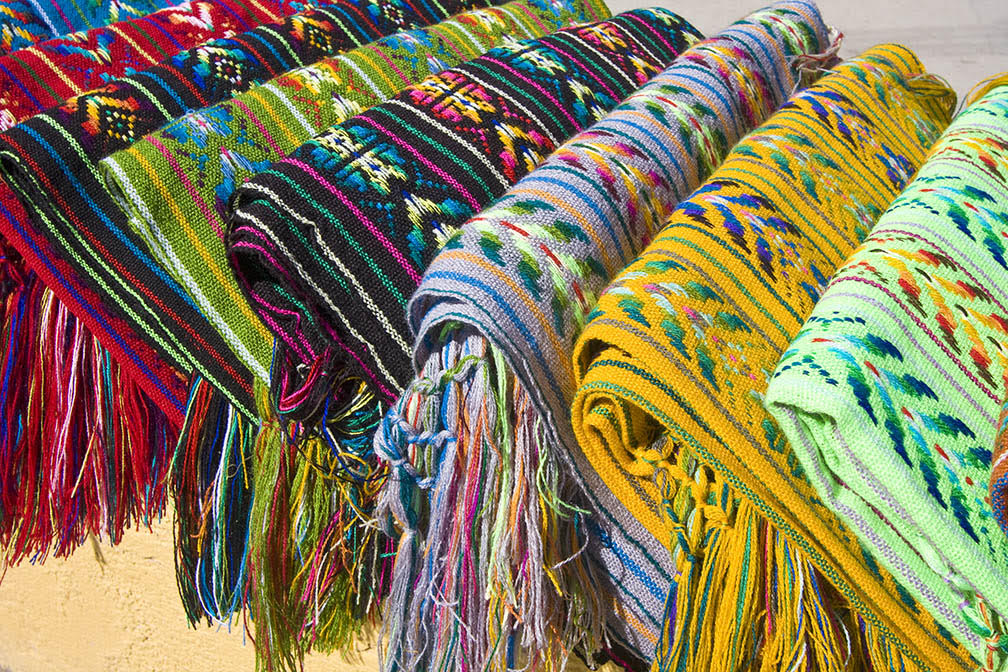
These people are Tarahumara Indians, known for their astonishing speed and endurance on foot. Some promoter in Colorado tried bringing a few to ultramarathon races (we’re talking 100 miles of nonstop running) but gave up when the Indians habitually horrified the pro trained athletes by taking cigarette breaks, running in leather sandals … and winning.

This little settlement down the cliff actually predates the hotel but the family didn’t seem to mind visitors. The Tarahumara are sweet and smiled shyly while we took pictures.
Meanwhile, among the “you can’t miss this” stops, was the Valley of the Mushrooms. Huge boulders sit atop eroded pillars and are wonderful to photograph. We didn’t, alas, get to the Valley of Frogs, the Valley of Breasts or our personal fav, the Valley of Erect Penises … which was recently renamed, for tourism’s benefit, the Valley of Monks.
Our last day, we got to do something truly special.
Most people just do the usual tourist stuff … visit the valleys, the overlooks, a couple of house-caves preserved for visitors. But if you ask, you can visit a real village. And you don’t have to hike five hours to reach it.
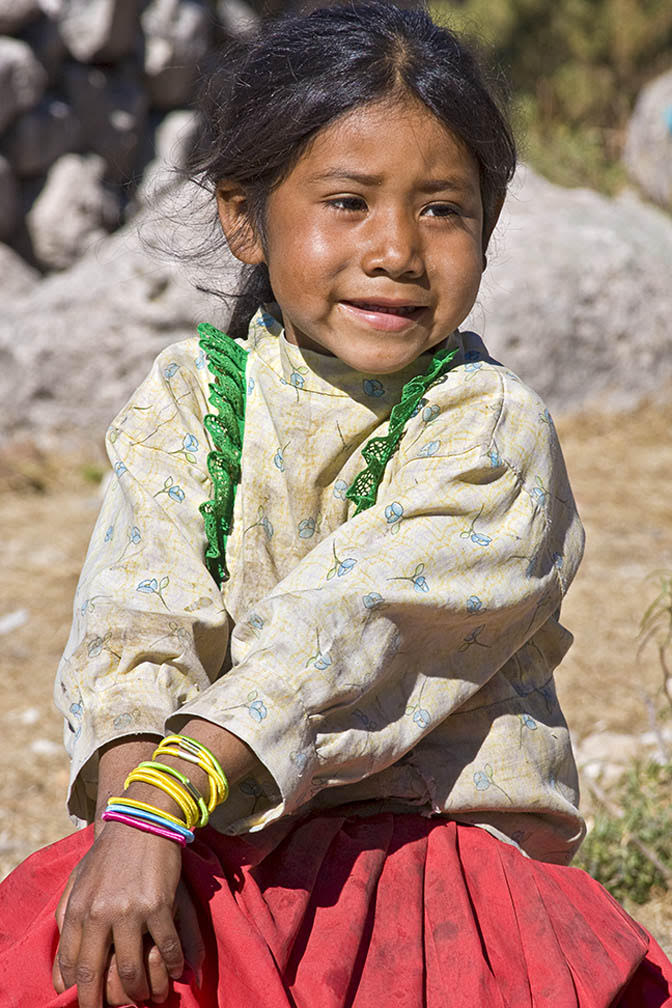
Forty five minutes in a Hummer brought us to San Alonso, a wide spot between two canyons where 200 people live. A single huge corn field covers most of the valley. This is the staple food here. The people live in small adobe or wood houses with tin roofs and farm with simple hand tools and mule power.
San Alonso got electricity only in 2007. Our guide, Gustavo, arrived bearing gifts … oranges, mangos, chips but also, thanks to an Australian aid organization, school books, pens, pencils, plastic scissors, combs, tooth brushes … an amazing assortment of everyday things that no one here has.
Children appeared from nowhere to mob us. They gazed with huge, solemn eyes … that is until the gifts came out. It was a dozen holidays rolled into one and the kids started to giggle and laugh while trying to balance all the stuff in their tiny arms.
The men were dressed in modern pants and shirts but most women still wore traditional flowing skirts in vivid colors, with blankets over their shoulders and scarves on their heads. The children were in a mix of old and new. But many still wore huaraches … sandals of leather thongs, soled with a slice of old tire.
Our last stop on the train was Divisadero, where we found a chap with a makeshift grill … basically a sheet of metal with a fire beneath. And on top, were a line of chile rellenos, which a lot of people consider the Mexican signature dish. Huge chiles are stuffed with cheese, dipped in batter and fried. Then the man crisped them even more on hot metal.
They were delicious.
INFO
The best time to visit Copper Canyon is fall, winter or spring. Summer is hot and rainy. Winter, though, can be chilly and it sometimes it even snows.
It is possible to ride the train all the way from Los Mochis near the coast to Chihuahua, but the most scenic part is El Fuerte to Divisadero. The train is first class, with comfortable seats, good facilities and a dining car. And they let you stand between the cars to take pictures.
For more information on Copper Canyon, contact: https://mexicoscoppercanyon.com/
Mazatlan is a Pacific port town, situated right at the mouth of the Sea of Cortez, approximately 550 miles due south of El Paso, Texas, and only 7 miles south of the Tropic of Cancer
For more information on Mazatlan, contact: https://www.visitmexico.com/en/main-destinations/sinaloa/mazatlan
————————————————————————————————–
TEQUILA
Okay, so it’s not REALLY tequila if it’s not made in Jalisco, Mexico.
Most of the stuff you buy in Mexico says simply “made of agave.” But like champagne and cognac, much of it tastes the same, as long as the quality is decent. And I’m not going to split hairs if what I’m drinking is about to be smothered with ice and unidentified tropical fruit.
Bringing me to our visit to “Los Osuna” just north of Mazatlan on the west coast of Mexico.
If you go to Mexico, you should visit one of these tequila factories. Of course, they’re touristy and a bit tacky but they’re also fun.
The local Indians didn’t invent tequila … they just discovered that you can punch holes in an agave plant, catch the sap and ferment it into something that will get you very drunk. Initially, the treasured liquid was reserved for holy festivals and given only to priests, warriors and, for reasons we really don’t want to ask, pregnant women.
It was the invading Spaniards who decided to distill the stuff and wound up with what we today call tequila.
Los Osuna is, like much of Mexico outside the cities, rural, rustic, charming. The entrance has a fence made of cactus and large blue agave plants cover the landscape.
Agave is a desert plant that looks like a large ball of sharp tipped spears. Cut the spears off and you’re left with a yard-wide ball called the pineapple because that’s what it looks like.
Dozens of the things lie around in heaps at tequila factories to ripen. Eventually, they’re sliced into pieces and tossed down a brick well that is sealed and becomes a steam oven.
The cooked pulp looks like caramel and tastes like caramel laced with lemon. Quite yum … an opinion shared by the thousands of enthusiastic bees that swarmed the heap of smoldering slices.
From here, the pulp is crushed (the old way with a stone wheel driven by mules, the “new” way by a belt with teeth) and the sap poured into 1,000 quart wood barrels with yeast to ferment. The stuff is then distilled twice and stored in more barrels to age.
Of course, we got to drink.
Straight, tequila is smooth on the tongue, with a bit of vegetable taste and a hint of lime. It will get you smashed, fast.
And then there are the mixed drinks … tequila sunrise made with blood red grenadine, margaritas made with lime and sometimes other fruit. Down here, the tourist spots inevitably blend margaritas with crushed ice so it looks and tastes like an alcoholic slushy.
But if you are a purist, only sugar syrup, lime and water will touch your drink, along with salt along the rim of the glass.
Back at Los Osuna, the company’s “Tequila Bandita” fired up her shot glasses and led us in yet another toast.
Not to tequila.
Rather, “Here’s to ‘made of agave.'”
